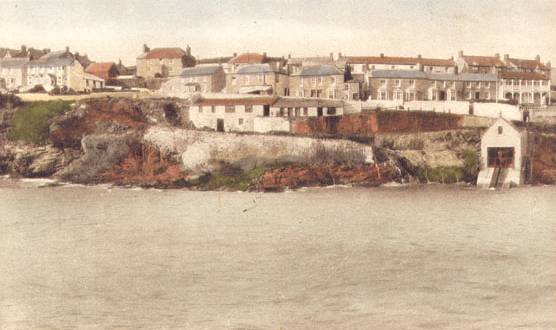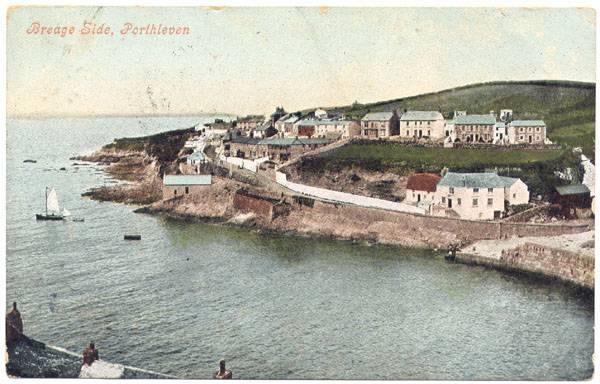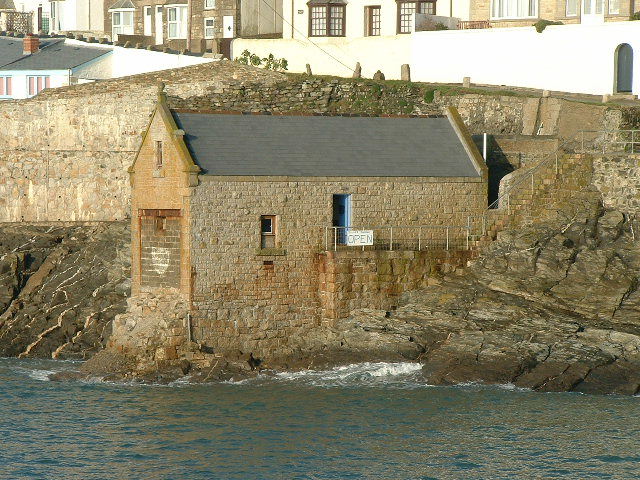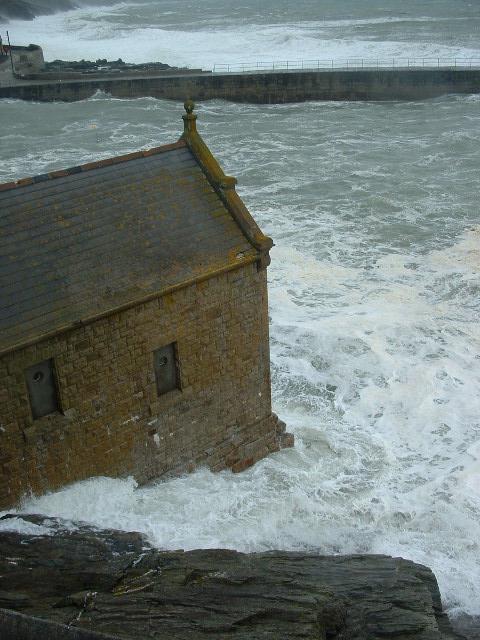Porthleven Lifeboats
WHEN A LIFEBOAT WAS STATIONED AT PORTHLEVEN
Adapted and enhanced from an article first published from Porthleven in 1963 by
Alderman F.E.STRIKE B.E.M.
PORTHLEVEN LIFEBOATS 1863-1929
`AGAR ROBARTES` 1863-1882
`CHARLES HENRY WRIGHT` 1882-1900
`JOHN FRANCIS WRIGHT` 1900-1926
`DASH` 1926-1929
One hundred years ago in 1863 a six-oared lifeboat was first stationed at Porthleven. It was at the request of a local M.P., Mr. F.J. Agar Robartes and the local people, that a lifeboat should be placed here. Mr. Agar Robartes gave £150 towards the cost of the boat and the lifeboat was liberally carried, free of charge the whole distance from London to Truro by the Great Western, Bristol, and Exeter, South Devon and Cornwall Railway Companies, who were ever ready to aid the Institution in every way in their power.
The boat was named, at the request of the local residents, the AGAR ROBARTES after the philanthropic donor.
The lifeboat house was erected on land leased from Mr. Edward Coode, of St. Austell, and was built for £145.
It might seem starnge to some readers to know that the site chosen was on the higher road at Breageside. In the days of rowing boats, the boats were kept on the specially constructed waggons ready for service. The keel of the lifeboat rested in a long iron channel with a little free way. The front portion of the waggon with the shafts for the horses had a swivel for driving purposes and the front wheels were much smaller than those at the rear. This would allow the boat to be released more freely into the sea. There were portable wooden chokes on the fore and back of the waggon to keep the boat rigid during transport.
At times four horses could be used to draw the boat, but when the lifeboat was required miles away, as in the year 1867, when called to Mullion, six horses were used. On January 4th a gale was blowing from the east, on Saturday evening, the 5th, the wind veered with gale force to the South West. Many ships had been sheltering from the easterly gale under Predannack Headland, the wind changed so quickly that some of the ships found themselves in trouble before they could get away, owing to the raising of their anchors. The crew of the Cherub took to their boats and by good fortune was carried on top of a breaker to the sandy beach at Polurrian. Two other ships, the Margaret and the Ebbw Vale had been in collision and were driven ashore before the Lizard or Porthleven lifeboats arrived.
It must have been a strange sight on that Sunday morning to see the Porthleven lifeboat being hurriedly drawn up through the streets of Helston by six powerful horses, as the people were on their way to church.
In 1892 Phillis Hosking, wife of Henry, who lived near the lifeboat house and who was near to her confinement, was so terrified by the maroon explosion and the getting out of the lifeboat for a surprise night accident, that she was taken ill and died. After this sad affair, the maroon calling out the lifeboat crew was fired from a post in the Wrestling Field, about 500 yards on the cliff top, west of the lifeboat house. The post can still be seen, very much weather beaten and almost ready to fall.
NOT WELL SITED
Although Porthleven lifeboat went to the aid of several ships and local fishing boats, it was not and ideal place for a lifeboat station. When housed at Lifeboat Terrace, there were times when the Inner Harbour was closed owing to bad weather conditions and the boat would be unable to get afloat. If she was required during fog and the tide was out, she would have to wait intil the return of the tide before she could be put to sea. There were even times when it was necessary to push the lifeboat over the jetty, when the water would be three to four feet from the top of the quay.
In the year 1894 the Lifeboat Institution, after taking into consideration the many odds against the lifeboat going afloat from the house at the higher road, they decided to build a new house and slip-way on the rocks on the north side of the entrance to the harbour and opposite the peir, where the boat could be launced, even at low water. The cost of the erection of the new house was £1,395.



The slipway has now gone but the house remains in pretty good condition.
This house suffered great buffeting and at times it was impossible to launch even from here. A high tide on October 8th, 1896, broke in the wooden doors of the lifeboat house. At the time there was a gale of wind from the S.S.E. to S.S.W. with a heavy ground sea and the lifeboat was completely filled by the sea and would have been washed out of the house had she not been securely fastened down.
New iron, open barred gates replaced the wooden doors. During a gale in 1906 there was great roof damage and the house again flooded.
This house suffered great buffeting and at times it was impossible to launch even from here. A high tide on October 8th, 1896, broke in the wooden doors of the lifeboat house. At the time there was a gale of wind from the S.S.E. to S.S.W. with a heavy ground sea and the lifeboat was completely filled by the sea and would have been washed out of the house had she not been securely fastened down.
New iron, open barred gates replaced the wooden doors. During a gale in 1906 there was great roof damage and the house again flooded.

On December 5th, 1863, the weather was thick and dirty and a strong wind was blowing from the W.S.W. A barque was seen in the bay apparently making for the land. As soon as it was seen that she was running into danger the lifeboat Agar Robartes was launched into a heavy sea to go to the vessel`s assistance. When she arrived alongside the ship some of the lifeboat`s crew boarded her and at the request of the captain proceeded with the ship to Falmouth. She proved to be a Russian barque Salmi bound from Shields to Civita with coals. It had been thick weather for several days and the captain had lost his reckoning.
NEW BOAT
In 1882 the six-oared, 30ft boat was replaced with a new and larger boat, a 34ft keel, eight feet beam and rowing 10 oars and double planked. The cost of the new boat, with its transporting carriage was defrayed by the legacy of the late Mrs. Eliza Wright of Southport, in memory of her late son, after whom the lifeboat was named, the CHARLES HENRY WRIGHT.
On October 5th, 1887, twenty-five fishing boats left the harbour between eight and nine o`clock in the morning. The sea at the time was smooth. At 10-30 it was seen by the harbour authorities that there was a heavy sea raging and a red flag was hoisted, signifying “Haste to Harbour”. The boats immediately made for the shore but found there was graet danger in running in at the harbour mouth. The lifeboat Charles Henry Wright was launched and in two hours, amidst heavy seas, towed safely into the harbour eight of the boats and those on board. The fishermen were afraid to enter without the assistance of the lifeboat, and even with the help of the lifebaot, danger incurred, several of the boats narrowly escaped being driven on the rocks or foundering. Coastguard men wearing life-belts with lines attached to them, were stationed on the western rocks ready to render assistance if required.
MEDALS
Men of Porthleven have been awarded two medals. In 1865 the silver medal and £2 was voted to Peter Pascoe for rescuing, at great risk of his life, a man who had previously attempted to save the life of a sailor belonging to the barque William of Sunderland, which was wrecked at Porthleven.
In 1943 the Institution awarded its bronze medal to Mr. T.H. Matthews, the harbour pilot, for the rescue, at great risk, of an Army Officer who went to the help of a sergeant who had gone to bathe and was in difficulties.
LIFE BOAT SERVICES
28 launches on service
50 lives rescued
December 5th 1866, Russian barque Saloni.
October 5th 1886, fishing boats, saved eight boats.
May 18th 1888, fishing boats, gave help.
December 4th 1898, ship Antonin, gave help.
December 29th 1900, barque Polykarp of Grinstad, landed two.
April 3rd 1904, barge Steery, gave help.
March 18th 1907, White Star liner Suevic of Liverpool, landed 18.
May 30th 1907, brig Polly of Bristol, gave help.
August 1907, brig Transen, landed 7.
May 16th 1916, S.S. St. Gothard of Glasgow, assisted to save vessel.
September 30th 1923, S.S. Charbonnier of Havre, gave help.
With powerful engine propelled lifeboats stationed at the Lizard and Penlee, the last Porthleven pulling boat, DASH, was withdrawn on September 3rd 1929.